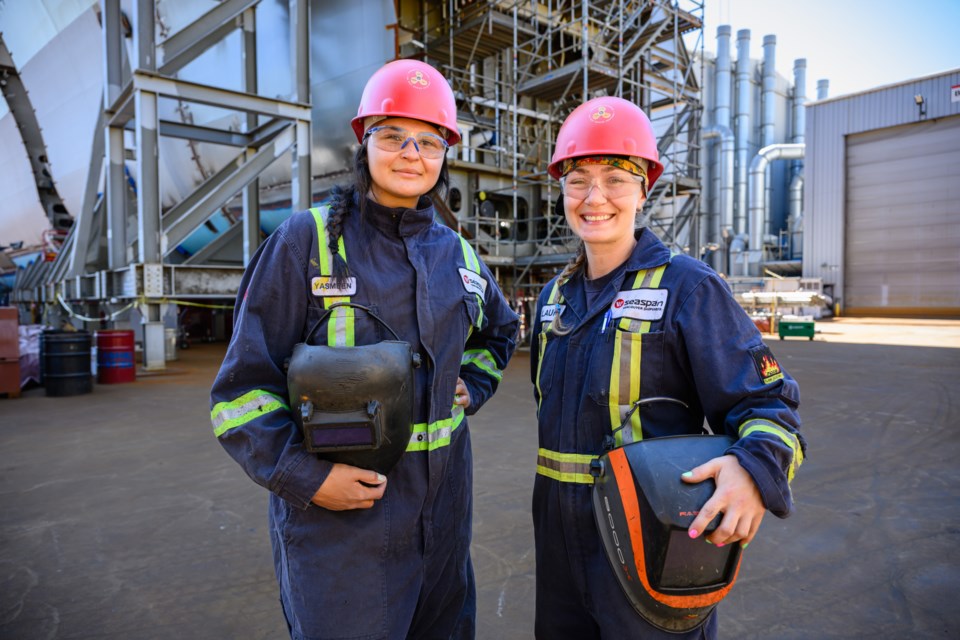Each ship at Seaspan’s Vancouver Shipyards tells a story of craftsmanship, innovation and purpose. Here, plates of steel become the Canadian Coast Guard’s and Royal Canadian Navy’s largest vessels, including HMCS Protecteur, the longest naval ship ever constructed in Canada.
The process is not magic, but the result of skill and dedication. Each ship stands as a testament to the talent and commitment of the shipyard’s trades workforce, a team of more than 2,000 strong.
Among the shipyard’s workforce is welding journeyperson Laura Strotz, who has worked at Seaspan for nearly two years. Her path into welding began right after high school, when her uncle encouraged her to pursue a career in the trades field. She quickly developed a passion for welding and by coincidence, the same uncle later introduced her to Seaspan, where he once worked in the 1990’s.
Although Strotz did not start her career at Seaspan, she soon came to value the unique scale and pace of the shipyard.
“It's so fast-paced here, it’s just amazing,” she says. “The ships are now almost completely together and things move quickly. It's exciting. I've never seen that before.”
Even with the pace of work, Seaspan ensures that every task receives the attention it deserves, particularly when it comes to safety and the ongoing training and development of its workforce.
This commitment is especially meaningful for welding apprentice Yasmeen Pomeroy. As she accumulates the hours needed to become a journeyperson, she finds herself growing more confident in her trade, supported by the many learning opportunities available at Seaspan.
“There's lots of training opportunities with different metals and lots of very difficult angles,” Pomeroy says. “I'm finding myself becoming a better welder. I know how to weld everything in every position and not every person doing their apprenticeship gets that.”
The opportunity to build skills extends beyond the early stages of a career. Seaspan makes an ongoing investment in every worker’s development. Even with her years of welding experience, Strotz continues to grow in her trade thanks to the wide range of opportunities available in the shipyard.
“This has probably been the hardest job that I've ever had as a welder, but I really like it. I really like working here because there's a wide range of everything here,” Strotz says. “I'm learning to do ceramic welding, they have me doing some TIG welding tests, next, they're going to be getting me to weld stainless steel. I feel like in this place I've used all my years of experience. It's all getting used all at once.”
Despite the complex challenges inherent in shipbuilding, Strotz approaches her work with confidence, supported by a culture of care and collaboration.
“The doors are open and they keep on opening. I'm never going to leave here — the help here is amazing. If you're struggling with welding, they will come in and give you confidence," she says.
Investing in and supporting the development of their workforce is central to everything Seaspan does. By joining Seaspan, employees contribute to larger-scale projects that shape the future of the RCN and the CCG while also advancing their own growth through opportunities unavailable elsewhere. Seaspan builds ships, but even more importantly, it builds a multi-disciplinary, highly skilled trades workforce that improves everyday.
“Even if you've been welding for 10 to 20 years like me, I think this place is great for all welders, because there's just the support behind you,” Strotz says. “They have the time and the money to give and invest into you to become a better welder. You can see it, you know — you can feel it.”
Join the team building ships that shape Canada’s future, while securing your own. Learn more at www.seaspan.com/the-future-is-yours-to-build.



